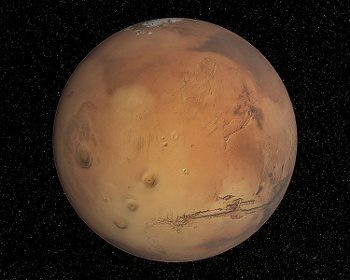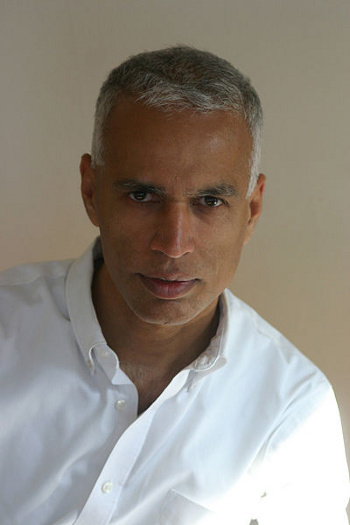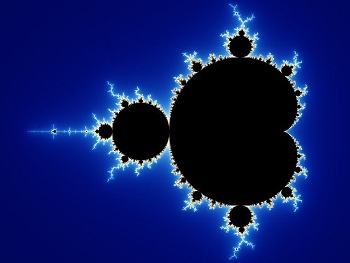Math Appreciation
October 2, 2013
The popularity of
television shows about
science has proven that a person needn't be a
scientist to appreciate scientific discoveries.
Computer graphics help to a great extent, and having one or several scientific advisors is a requirement practicing scientists would make. Although the scientific content of these shows is never a surprise to me, I really enjoy the short explanatory
clips by the scientists involved in the particular field being showcased.
The history of this type of television science
documentary goes back to
Walt Disney and his
Disneyland television series on the
ABC television network. As a child, I saw four remarkable, mostly
animated, science episodes. Three of these were on the popular theme of the time, the
manned exploration of space. The other, "
Our Friend the Atom," was about
atomic physics with an emphasis on
nuclear power.[1]
The three
spaceflight themed episodes were "
Man in Space (1955)", "
Man and the Moon" (1955), and "
Mars and Beyond" (1957).[1] These episodes aspired to scientific credibility through commentary by
aerospace engineer,
Wernher Von Braun, and
Earl C. Slipher, the brother of
Vesto Slipher and a
planetary astronomer at
Lowell Observatory.

The planet, Mars, was quite mysterious in the years before being photographed by the Mariner 4 spacecraft in July, 1965.
(Celestia screenshot by Niko Lang, via Wikimedia Commons.)
The "Mars and Beyond" episode included an exposition of an expedition to
Mars. A
flotilla of six
umbrella-shaped
spacecraft would be assembled in
Earth orbit, each ship holding a crew of twenty. The topmost portion of the ships would
rotate to provide
artificial gravity, a common theme for
space platforms in those days. A
nuclear reactor would sit at the end of the rod portion of the umbrella, and a
silicone oil coolant would travel the length of the rod-like portion to turn an
electrical generator. A
cesium ion beam,
accelerated by an
electric field, would be used as
propulsion. The expeditionary force would spend 412 days on the Martian surface.
Images of futuristic spacecraft and alien planets are inherently interesting, but can the public become equally excited about
mathematics?
Manil Suri, a professor of mathematics at the
University of Maryland, Baltimore County, and
the author of several novels, has just written an
opinion piece in
The New York Times entitled, "How to Fall in Love With Math."[2-3] His theme is that one does not need to be a
mathematician to enjoy mathematics.

Manil Suri
Suri was born in Mumbai, India, and he was awarded a Ph.D. in mathematics from Carnegie Mellon University in 1983.
Suri is a professor of mathematics and affiliate professor of Asian studies at the University of Maryland, Baltimore County.
His research areas are the finite element method and partial differential equations, and he is the author of three novels.
(Photograph by José Villarrubia, via Wikimedia Commons.)
As Suri writes, mathematics is much more than those narrow topics you studied in
high school, and it's decidedly more interesting. Mathematics isn't
addition,
subtraction,
multiplication and
division, it's more about ideas than
algorithms, and many of these ideas can be appreciated by non-mathematicians, just as science can be appreciated by non-scientists.[3]
As Suri writes,
"...You can appreciate art without acquiring the ability to paint, or enjoy a symphony without being able to read music."[3]
Although art and
music are everywhere in our environment, from
elevators to
billboards, mathematics is not. Still, as Suri comments, he often meets people who want to learn more about mathematics. Mathematician,
Keith Devlin, of
Stanford University has written a book, "The Math Gene," in which he argues that the
human brain is "wired" for mathematics, and humans may crave it.[4]
Suri mentions the following mathematical ideas that can be appreciated without calculation or formulas:[3]
• The origin of numbers. Suri equates the idea that we can create the whole numbers just by adding one to predecessor numbers with a magic trick.
• The sequence of regular polygons with perimeters converging to a circle. This also expresses the concept of limit upon which calculus is built.
• Visualizing a sphere as a stack of its circular cross sections. Archimedes did this more than two millennia ago to calculate the volume of a sphere, and it's another example of calculus.
• Fractal images. This counts only when the observer realizes that there's a simple mathematical rule that generates these.

The now familiar Mandelbrot set.
(Via Wikimedia Commons.)
Suri has the hope that such math appreciation will neutralize the typical negative attitude to the subject. If students can perceive the subject as playful and stimulating, as many
Internet videos and animations demonstrate, mathematics might recover from its generations of bad
public relations.[3]
References:
- YouTube videos of Our Friend the Atom Man in Space Man and the Moon and Mars and Beyond.
- Manil Suri Academic Web Site.
- Manil Suri, "How to Fall in Love With Math," The New York Times, September 15, 2013.
- Keith Devlin, "The Math Gene: How Mathematical Thinking Evolved And Why Numbers Are Like Gossip," Basic Books (Reprint edition, May 22, 2001), ISBN 978-0465016198, 353 pages (via Amazon).
Permanent Link to this article
Linked Keywords: Television program; television show; science; scientist; computer graphics; video clip; documentary; Walt Disney; Walt Disney anthology television series; Disneyland; American Broadcasting Company; ABC television network; animation; animated; human spaceflight; manned; space exploration; exploration of space; Our Friend the Atom; atomic physics; nuclear power; spaceflight; Man in Space; Man and the Moon; Mars and Beyond; aerospace engineering; aerospace engineer; Wernher Von Braun; Earl C. Slipher; Vesto Slipher; planet; planetary; astronomer; Lowell Observatory; Mars; Mariner 4; Celestia; Wikimedia Commons; flotilla; umbrella; spacecraft; geocentric orbit; Earth orbit; rotation; artificial gravity; space station; space platform; nuclear reactor; silicone oil; nuclear reactor coolant; electrical generator; cesium; ion beam; acceleration; accelerated; electric field; ion thruster; propulsion; mathematics; Manil Suri; University of Maryland, Baltimore County; author; novel; opinion piece; The New York Times; mathematician; Mumbai; India; Doctor of Philosophy; Ph.D.; Carnegie Mellon University; professor; Asian studies; finite element method; partial differential equation; Jose Villarrubia; high school; addition; subtraction; multiplication; division; algorithm; art; painting; symphony; musical notation; music; elevator; billboard; Keith Devlin; Stanford University; human brain; natural number; magic trick; regular polygon; perimeter; convergent series; circle; calculus; sphere; cross section; Archimedes; millennium; millennia; volume of a sphere; fractal image; algorithm; mathematical rule; Mandelbrot set; Internet; public relations; Keith Devlin, "The Math Gene: How Mathematical Thinking Evolved And Why Numbers Are Like Gossip," Basic Books (Reprint edition, May 22, 2001), ISBN 978-0465016198, 353 pages.